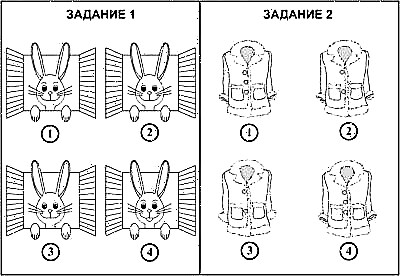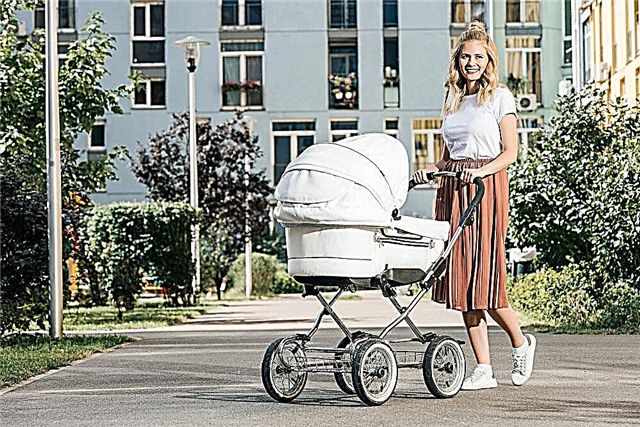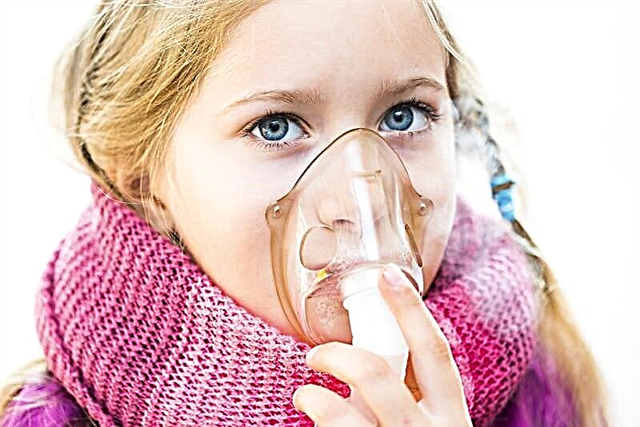
Four-year-old children seem to be adults, but they are still very young. At this age, the formation of the child's personality and character continues, which must be gently corrected by the forces of the parents. What skills has the child already mastered by the age of 4 and what activities are suitable for the development of kids 4-5 years old?

Age features
- The baby is still mobile and energetic, but has already become more assiduous and is able to do one thing for about 20 minutes. Fine motor skills are constantly being improved. Most four-year-olds especially enjoy drawing.
- After 4 and a half years, the child changes outwardly, since he begins to actively develop muscle and bone tissue.
- For a child over 4 years old, the social component of development is very important. The kid makes friends among other children, trying to find a "common language" with them. The child notices the feelings of other people well, knows how to empathize. The kid learned to formulate his own thoughts in words. Many 4-year-olds have imaginary friends.
- A 4-year-old child continues to master his native speech. For many children of this age, slight lisp is characteristic. The vocabulary of a four-year-old is growing very rapidly (up to 2500-3000 words by the age of 5). The speech of the little one is enriched with expression and intonation. The baby voices his own actions and everything that he sees, and also constantly asks a large number of questions. In about 5% of children, the development of speech at the initial stages is accompanied by stuttering.
- The intellectual capabilities of a 4-4.5-year-old child increase significantly. The kid is ready to learn letters and numbers.

What should a child be able to do?
Most children at 4-4.5 years old are able to:
- Run while maintaining balance while changing direction or pace.
- Stand on 1 leg for several seconds, and also quickly jump from this position several times.
- Jump forward on both legs.
- Jump from a small height (up to 20 cm).
- Walk on the bench while maintaining balance.
- Play with the ball - throw and catch, hit objects from a distance.
- Ride a bike.
- Speak clearly and legibly, making up phrases of 6-8 words. Maintain a conversation.
- Play with other kids in a group or in pairs.
- It is correct to name the plural of nouns.
- It is correct to use prepositions.
- Do not respond with hysterics to disappointment or resentment.
- Take care of the animal.
- Take care of your own hygiene (go to the toilet on your own, use toilet paper, turn on the tap).
- Eat gently using a spoon and fork.
- Help parents clean up.
- Be restrained in public.
- Know some letters.
- Give your name, patronymic and surname, as well as your address.
- Distinguish between living and nonliving.
- Understand the plot of a cartoon or play.
- Know the names of animals, plants, professions, household items.
- Navigate in terms of right-left-bottom-top.
- Compare items in width, height, length, quantity.
- Color drawings without going over the edge.
- Connect dots with a line.
- Stringing buttons and beads.
- Know the seasons, weather phenomena, and parts of the day.
- Identify the missing item.
- To retell a fairy tale.
- Find differences between two images.
- Fold puzzles from 2-4 elements.
- Summarize subjects into groups.
- Find identical pairs of objects.
- Identify unnecessary items.
- Know geometric shapes and numbers up to 10.
- Use scissors.

Height and weight
Compared with the indicators at 3 years old, by the age of four, the baby's weight increases by about 2000-2200 grams, and his height - by 7-8 centimeters. To navigate the pace at which the child's physical development is taking place, doctors and parents compare the baby's indicators with the norms derived for children of this age category of a particular gender (girls, as a rule, have lower indicators). We presented the average values and boundaries of the norm in the following table:
You can use the calculator to calculate norms for your child... The calculator is based on the standards for height and weight from the World Health Organization (WHO).
Types of child development
Physical
A child at the age of four should move enough, improve their agility, coordination and endurance. This is the purpose of the baby's physical development, including gymnastics, dancing, physical exercise with mom, swimming, cycling, outdoor games and many other options for activity.
Gymnastics, which includes dynamic exercises, is important to do at least 2 times a week. It is performed during the day, long before bedtime, in a ventilated room and preferably in a group of children. The optimal duration of such gymnastics is 20-25 minutes.

Mental
The psyche of a four-year-old is developing very actively and the range of emotions of the baby is expanding. In addition, children aged 4-5 are very susceptible to the reaction of an adult. Having a parent or caregiver treating your baby with approval and respect can help build a positive self-image for the baby.
Classes for the mental development of children 4-4.5 years old include exercises that affect the baby's attention, as well as memory and thinking. The child is offered:
- To generalize objects according to some criterion.
- Collect a picture consisting of 3-4 parts.
- Determine similarities and differences in drawings and toys.
- Choose the same items from a group.
- Repeat a specific sequence of movements shown by an adult.
- Collect from the building constructor, focusing on the sample.
- Identify unnecessary items in the group, then explain your choice.
- Find antonyms for words.
- Memorize the plot of the drawing.
- To retell a fairy tale.
- Tell nursery rhymes and rhymes by heart.
- Describe a significant event that happened recently.

To train your memory, do some of the activities shown in the following video from SovaFilmProduction.
Emotional
Developing emotions in a 4-year-old child is an important part of a baby's full development. A child of this age begins to understand the relationship of people, may notice that a person has changed his mood nearby, knows how to express his own emotions.
A four-year-old can be sympathetic and attentive. The child feels how he is treated.
Sensory and musical
Sensory development of a child affects the baby's senses, which are responsible for hearing, scent, and touch. The child is asked to determine the characteristics of objects by touch. This is how the baby learns that objects are hard or soft, rough or smooth, warm or cold. Sensory development activities also include games related to smells and tastes.
By the age of four, the child is already familiar with some musical instruments, small pieces, music with different rhythms. The child already has favorite tunes, hearing which, the baby will sing along.

Speech
Speech development is extremely important for every child 4 years of age. First of all, it is influenced by the communication of the baby with adults, as well as with other children. This increases the vocabulary of the toddler, teaches him to build sentences and express his opinion in words. At the age of 4, many children still do not pronounce sibilants and "p", therefore, with four-year-olds in the form of games, they often conduct classes on pronunciation of these sounds.
To stimulate the development of speech in children 4-4.5 years old, you can:
- Learn rhymes and songs with them.
- Consider and discuss plot pictures.
- Consider a fairy tale in pictures and reproduce its plot.
- Read stories with mom and discuss them.
- Listen to fairy tales in audio recordings.
- Solve riddles.
- Discuss before bed how the day went.
- Do articulatory gymnastics.
- Study letters and sounds.
- Determine the first letter in a word, divide words into syllables.
Sing with your child the following nursery rhyme song of the Lyulabi TV channel.
If a child at 4 years old has a small vocabulary or formulates sentences with difficulty, it is necessary to assess the dynamics of his speech development. For more details see the video by E. Komarovsky.
Fine motor skills
Motor development is considered a very important part of the development plan for young toddlers. Fine motor training stimulates speech development by targeting the speech-producing area of the brain. These activities include playing with sand, cubes, construction sets, beads, cereals, beans. Perform finger gymnastics with the baby, tie knots on a cord, fasten and unfasten zippers, buttons, buttons, hooks. At the age of 4, add crafts for modeling and drawing, for which you need to cut something with scissors and glue.
For the development of fine motor skills of the child, you can use ordinary cereals. How to conduct such a lesson, see the video of the TSV channel "Mom's School".
Cognitive
A four-year-old child actively learns the world, and the development of his cognitive sphere should be aimed at improving memory, thinking, logic, attention.
Usually, activities for the cognitive development of a 4-year-old child have a specific topic, for example, "pets", "spring", "water", "ground transportation", "professions", "night" and others. On such a topic, games are organized with the child, during which the baby will determine colors, shadows, shapes, differences and similar elements, parts of a whole, generalizing properties, superfluous, opposites, missing elements and much more.
To develop attention
It is important for a 4-5 year old child to learn to focus on a specific task, and also to notice small details. He will need these skills in the future to be successful in school.

To develop the attention of a 4-year-old baby, you can offer your child:
- Repeat actions behind mom, for example, sit down - get up - close your eyes - touch your ear - open your eyes - take your hand to the side.
- Play with a ball in "edible-inedible", "flying-not flying".
- Strikethrough a specific letter in printed text. To complicate this task, one letter can be crossed out, and the other - underlined.
- Mom touches parts of her face and calls them, the child must repeat her actions. Then mom starts to “make mistakes”.

Mathematical
For a 4 year old, learning math should be fun and fun. It is convenient to teach a baby math while walking, for example, counting steps, passing cars, houses, birds. Fingers or special counting sticks can be used to explain simple examples.

Creative
Most children enjoy activities aimed at the creativity of the child. These include drawing, creating various crafts and applications, modeling from salt dough or plasticine, as well as role-playing games.
Development diagnostics
Parents should be alerted if at 4 years old a child:
- Cannot walk down stairs in alternating steps.
- He does not give his first and last name, as well as his gender.
- Cannot summarize several subjects in one word.
- Not able to learn a short verse.
- Doesn't remember the plot of the story.
- Cannot count to 5.
- Doesn't know simple geometric shapes.
- Doesn't know primary colors.
- Cannot build a bridge using the bricks.
- Cannot assemble a pyramid of 5 pieces.
- Shows cruelty to an animal, toy, or other child.
- Lethargic and apathetic during the day, or, conversely, often agitated.

Speech development games
- Game "what happens". Ask your child what items can be long, sharp, round, hard, scented, blue, liquid, and so on.
- Game "what happens if". We discuss given situations with the child, for example, "what happens if a ball falls into the water", "what happens if I fall into the snow."
- What can be done game. We ask the kid what can be done with an apple, a ball, water, cookies, sand, and so on. Another option for such a game would be to discuss “what you can do with” - drink, eat, sew, fill, buy.
- Game "what where". We ask the toddler what is in the hallway, in the nursery, in the kitchen. Then we ask you to say in which room the frying pan, cabinet, TV, and so on.
- Guess who game. We describe the animal in a few words and offer the baby to guess. For example, "guess who is fluffy, red and cunning."
- Stimulating the pronunciation of sibilants. We hiss like a snake, we chase the sparrow "kysh-kysh", we pronounce the utter words with "sh", we buzz like a fly, we repeat the phrases with the "zh", alternately buzz and hiss. In order for the child to distinguish "s" from "w", we pronounce them in turn. To distinguish "w" from "z" we imagine ourselves as a fly, and then a mosquito. For the pronunciation of the sound "h", we suggest that the kid imagine himself as a train.
- We perform gymnastics for the tongue and lips. We smile with a soundless pronunciation "and" (like a frog), stretch our lips forward with a soundless "u" (like an elephant), open and close our mouth without sound (like a fish), open our mouth, move our tongue up and down (like a swing) and side to each corner of the mouth (like a clock), keep a relaxed tongue on the lower lip (like a shovel), pull the tongue forward (like a needle).
To set the sound "P", do the "Snake" exercise shown by speech therapist Yulia Orlova.
Articulating gymnastics will help your child speak more clearly. Complete the tasks with a crumb from the following videos shown by speech therapist Tatyana Lazareva.
Sample exercise program for a week
Classes for the development of a child of 4 years old should be planned in advance, and best of all - for a week. So you do not miss the types of development that are important for your baby, do not overload the baby and you can prepare all the materials in advance. In drawing up a weekly plan for developmental activities at the age of 4-4.5 years, first of all, it is taken into account whether the baby is attending kindergarten. If the baby is in the garden all day, then you need to understand the following points:
- The child in the kindergarten already has daily developmental activities and regular physical activity.
- It will be possible to work with the baby at home only in the evening and on weekends.
- In the evening, you should not plan vigorous activity.
- After returning from the kindergarten, there is not much time left for classes, therefore, as a rule, only 1-2 classes are planned.
- It is worth finding out what program they are studying with the baby in the garden, so as not to duplicate classes, but to supplement them.
For a child who is not yet attending child care, the lesson plan will be more extensive. When compiling it, the interests of the crumbs, existing skills, visiting a development school or a sports section are taken into account.

We offer the following approximate weekly developmental activity program for a 4 year old child:
How to raise a child from 3 to 6 years old, see the video of the Education channel. TV.
Tips
- At the age of 4, a child can enroll in some sports sections. Attending sports activities will not only provide an opportunity to spend energy, but will also help you learn new skills and understand what discipline is.
- Praise your child more often and give him enough attention. The kid has become more adult, but still needs parents.
- From the age of 4, the child can be taken to the cinema, circus and similar places. To get to know this type of pastime successfully, do not immediately take tickets to the first row.
- Hearing hundreds of children's questions every day, it is important to remain a patient and wise parent. Do not refuse to answer the crumb, even if you do not know what to say. Find the answer together and satisfy your child's curiosity.
- A kid 4-5 years old can start teaching foreign languages. Classes, of course, should be in the form of a game.

Care and regimen
For the normal development of a four-year-old child, it is important to maintain his health, therefore, parents should pay attention to the daily regimen of the toddler and caring for the baby:
- The child should be provided with adequate rest. 4-year-old children sleep on average 11-12 hours a day. Many four-year-olds protest against daytime sleep, but doctors emphasize that children of this age still need rest during the day.
- Every day in the morning in the mode of a 4-year-old child, there are already familiar hygiene procedures. The kid washes himself, brushes his teeth, visits the toilet, and brushes his hair. Four-year-olds often have to be reminded to wash their hands after a walk and before eating.
- The child should have daily walks in which the four-year-old will have enough movement. In addition, you can go for a walk with friends, coming up with active and exciting games.
- If parents are engaged in hardening a child from an early age, but such procedures are continued and carried out systematically.
- They walk with 4-year-old children twice a day, choosing clothes for the weather.
- The nutrition of children of this age provides for four meals with pauses between them 3-4 hours. The nutritional value of the diet of a 4-year-old child per day is about 1,700 kcal. Read more about this in the article about the menu for a child from 4 to 6 years old.




